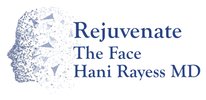Patients who have had a previous rhinoplasty but are unsatisfied with the results will seek a revision rhinoplasty. Typically Dr Rayess will ask you to wait one year from your last surgery before he evaluates you for a revision rhinoplasty.
What are some of the common reasons people seek revision rhinoplasty?
Patients seek revision rhinoplasty for numerous reasons. The most common ones include incomplete removal of the dorsal hump, too much narrowing of the nasal tip and persistent nasal obstruction.
How is a revision rhinoplasty different from a primary rhinoplasty?
A revision rhinoplasty in general will take more time in the operating room as Dr Rayess will have to dissect through scar tissue and the natural planes and tissues may be altered. The recovery for a revision rhinoplasty will be longer than a primary rhinoplasty. It can take up to 2 years for your body to get rid of swelling associated with surgery whereas in primary rhinoplasties this is typically accomplished in one year. Hence a revision rhinoplasty requires patience knowing that the results will take time for the swelling to subside. Dr Rayess will discuss with you in detail prior to your surgery.
Will you take cartilage from my ear?
The ideal place to harvest cartilage for grafts is the septum which is the structure in the middle of the nose. Often times patients who have had a previous rhinoplasty don't have adequate remaining cartilage in their septum. In these cases Dr Rayess will obtain cartilage from your ear. He will hide the incision on the posterior surface of your ear so it will not show and the cartilage that is removed will not change the shape of your ear. Occasionally cartilage may have to be harvested from your rib, or cadaver donor rib cartilage can be used to obtain additional cartilage for your revision rhinoplasty.

